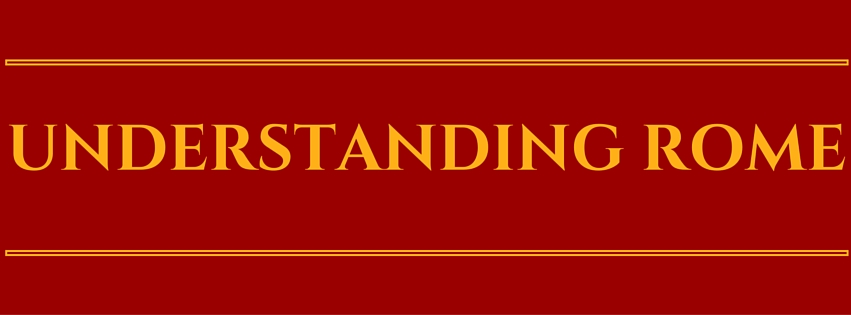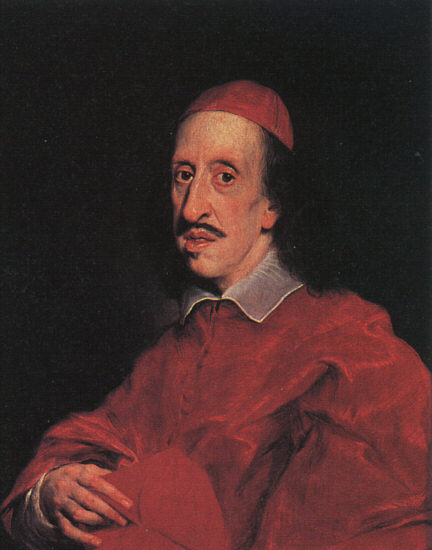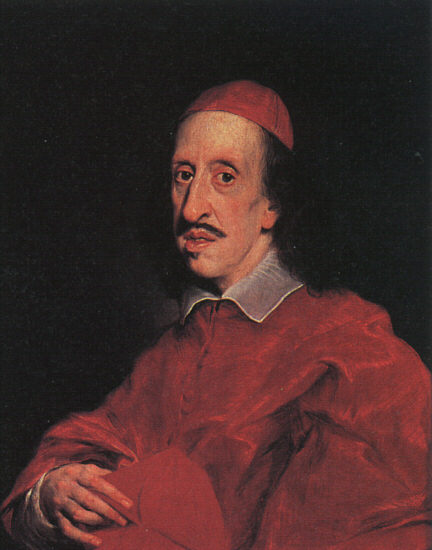I dropped into the Gesù yesterday because I’m going to start a few days with a group of sixth-formers by visiting the church next week. They’re studying the Reformation and the Counter-Reformation, and the Gesù is a bombastic place to start. Plus it’s close to their hotel and hopefully will give an atmospheric Baroque snapshot without being too overwhelming after a day travelling. So here are a few thoughts about Il Baciccia, who deserves to be more celebrated, and whose great triumph is the painting of the vault of the Gesù.
The photos of the ceiling are mine (taken yesterday) and seem to work fairly well if you’d like to click on them and zoom in to look closer at details.
The original 16th century interior of the mother church of the Jesuit order, the Gesù, had been a clear manifestation of the themes of the Council of Trent; vast, open, and austere in plan, it sought to eliminate dark corners and focus all attention on the altar and its liturgical function. However the church was to undergo a major alteration nearly a century after it was first built. This redecoration was a splendid representation of the change in mood which had taken place in Rome throughout the seventeenth century. When the General of the Jesuit Order, Gian Paolo Oliva, opened the competition for the new decorations at the Gesù in 1671, he turned to his friend Gianlorenzo Bernini, master of the Roman Baroque, for advice. The artist, now in his seventies, wasted no time in wholeheartedly recommending his great protégé, Giovanni Battista Gaulli, better known as Il Baciccia, a Genoan abbreviation of his first names.
Il Baciccia (1639-1709) had arrived in Rome aged eighteen after the rest of his family had been killed by the plague which had hit Genoa in 1657. Much of what we know about his arrival in Rome comes from The Lives of modern painters, sculptors and architects. Written in the 1730s by Lione Pascoli it sought – with limited success – to readjust the Tuscan bias of art history dictated by Vasari’s Lives of the Artists. Whilst, as with Vasari, it is unwise to take everything he writes as absolute fact, Pascoli’s account is nevertheless a very useful one. He tells us that after the young Gaulli arrived in Rome he soon came into contact with Bernini who, “while he lived, verily gave him [Gaulli] great illumination, and instructed him, and acted as his master”. Indeed such was the relationship between the two men that Bernini would be named as godfather upon the birth of Gaulli’s first-born son.
Taken under Bernini’s well-connected wing, Gaulli was introduced to the great patrons of seventeeth century Rome, and was taught to capture the spontaneity of expression so beloved by Roman patrons of the Baroque. His rise to popularity as a society portrait painter was swift, and Pascoli tells us that his talents as an artist were augmented by his personability, “good manners, and prudence”.
However, it is said that when presented with more complex quadri storiati (literally paintings which tell a story) requiring multiple figures, he ran into difficulty. Writing his Lives of Genoese painters, sculptors, and architects the following century, Carlo Giuseppe Ratti says that “whenever called upon to paint quadri storiati, it was Bernini himself who drew up the plans. Thus his [Gaulli’s] load was lightened, and with his [Bernini’s] examples he taught him [Gaulli]…”. This, whilst reliant on accounts given by Gaulli’s son and written some sixty years after the artist’s death, reveals a nervousness very much at odds with the extraordinary and complex bravura of composition found at the ceiling of the nave of the Gesù. The possibility that Bernini – by now in his seventies – may have personally intervened in the planning of the project has been considered, and undoubtedly the commission at the Gesù was unlike anything Gaulli had previously undertaken. Indeed a direct link can be seen between the paintings at the Gesù and the works executed by Guido Ubaldo Abbatini from Bernini’s designs in the vault of the Cornaro Chapel at Santa Maria della Vittoria.
The vault of the nave at the Gesù was finally unveiled on Christmas Eve of 1679. A multi-media extravaganza of fresco painting, stucco, and architecture, it shows the Triumph of the Most Holy Name of Jesus. The painting is a masterpiece of illusionism. It is as if the gilded stucco decoration of the ceiling, supported by white stucco angels, has opened up giving a vision of the heavens. The angels are the work of Ercole Antonio Raggi, right-hand man to Bernini, another reminder of the close link between Baciccia and his mentor. At the centre the monogram of the Jesuits, IHS – an abbreviation of Christ’s name – radiates blinding light and cherubim. To the left, projecting out from the field of the painting, the Magi proffer their gifts to the name of Christ. The figures kneeling in prayer in the central band are drawn up into Heaven by this light. Supported by angels, the clouds on which they kneel darken underneath, as simultaneously the name of God banishes sinners down into Hell. In the darkness beneath and to the right, a writhing mass of the heretical and the damned hurtle towards the viewer in the nave.
At the top right of this group the figure of Vanity is identifiable by her peacock, and by her side Heresy is shown with a head of snakes. These figures are cast over and beyond the gilded ‘frame’ in a mass of painted stucco, interacting with the gilded stucco of the ‘earthly’ realm. They even cast their (illusionistic) shadows over the church ceiling, emphasising the blocking of the divine light. The project, for it cannot be simply described as a painting, is realized using the sotto in su (literally meaning “below upwards”) perspective so beloved of artists of the Baroque. Here this sotto in su serves to emphasise the upward movement of the just towards the brilliant light. This vortex has as its apex the monogram of the Jesuits, towards which the just are drawn, and away from which the damned are repelled.
The drama of the event is such that the ordered and logical Classical architectural forms, set out in the father of all painted ceilings – Michaelangelo’s work at the Sistine Chapel – which had so characterized the spirit of the Renaissance, are unable to contain it. The very language of Renaissance order, once used to express the union between the earthly and the heavenly, of man’s knowledge of the unknowable, is here used for the opposite purpose. The earthly carefulness of the arches and rosettes of the stucco ceiling are engulfed by the drama of the power of the Name of Jesus.
Upon completion the Jesuits were delighted with the project, and such was the envy of the work that the Theatine monks at the nearby church of Sant’Andrea della Valle urged Il Baciccia to work for them too, repainting the nave and the dome. However Pascoli tells us that Gaulli’s respect for the existing works of Domenichino and Lanfranco led him to “make his excuses”, perhaps also mindful of the important role Bernini had played in the great triumph of his career.
The Gesù could be included in a tour focussing on the art of the Baroque





Trackbacks/Pingbacks